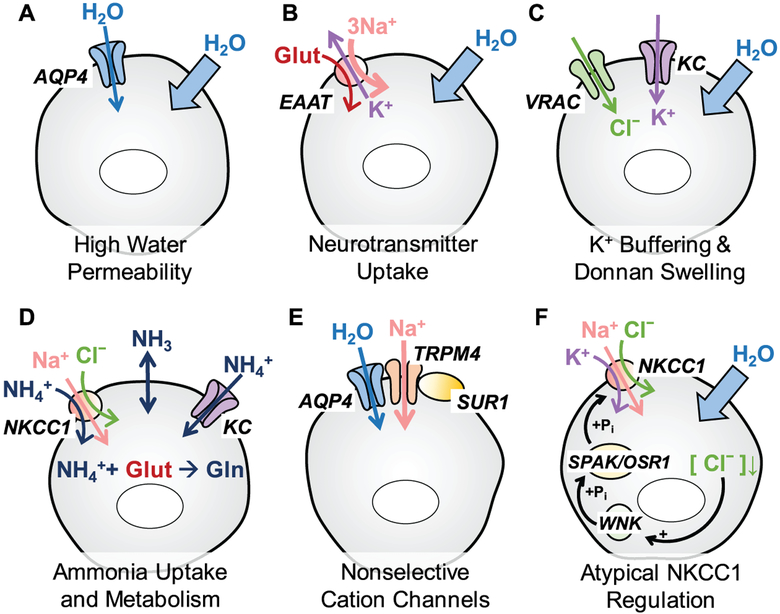Figure 12.3.
Astrocytic properties that may be responsible for preferential propensity of this cell type to cell swelling in neuropathologies. (A) Astrocyte membranes are highly permeable to water due to expression of the water channel aquaporin-4 (AQP4); (B) Astrocytes take up neurotransmitters from the extracellular space in order to maintain normal neuronal activity. Excitatory amino acid transporters (EAAT) take one glutamate in together with 3 Na+ and in exchange of 1 K+, and promote the accumulation of osmotically obligated water; (C) Buffering of [K+]o through potassium channels (KC) can be associated with the concomitant influx of Cl− through VRAC and promote Donnan cell swelling; (D) In normal brain and neuropathologies, astrocytes accumulate extracellular ammonia (NH3) via passive transmembrane diffusion and ammonium ions (NH4+) through potassium channels (KCs) and NKCC1. Inside the cell, NH3/NH4+ is then assimilated to produce glutamine from glutamate. (E) Upregulation and activation of the nonselective SUR1-TRPM4 channels and their assembly with AQP4 promotes Na+ uptake and water accumulation; (F) Astrocytic NKCC1 cotransporter contributes to electrolyte and water accumulation in response to high [K+]o. Cell swelling may paradoxically activate NKCC1 via the low [Cl−]i-sensing WNK/SPAK/OSR1 cascade and in such a way further amplify the persistent astrocytic swelling.

